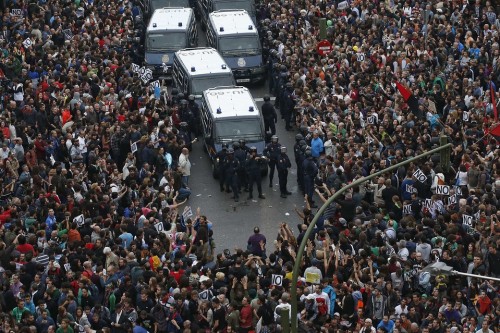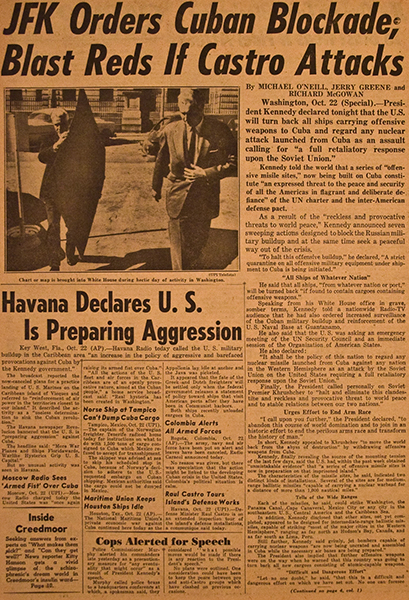Frankenstorms and climate change: How the 1% created a monster

Frankenstorm Sandy from space.
By Chris Williams
Spain: As two-party system breaks down, what prospects for a ‘Spanish SYRIZA’?

Demonstrators march to the Spanish parliament against austerity measures announced by the government in Madrid, September 26, 2012.
By Dick Nichols, Barcelona
October 28, 2012 – Links International Journal of Socialist Renewal -- The economic, social and territorial crisis in the Spanish state is morphing into a crisis of the two-party system that has provided Popular Party (PP) or Spanish Socialist Workers Party (PSOE) administrations for the last 30 years. Basque, Catalan and Galician nationalist forces (left and right), and the United Left (IU) and Union, Progress and Democracy (UPyD) parties are gaining support. However, only a brave gambler would put serious money on the future evolution of this crisis. While the two-party set-up has been severely weakened, a replacement party with enough popular support to impose a different solution has yet to emerge.
Venezuela: The future of ‘21st century socialism’ after Chavez's victory

Supporters celebrate the president's re-election on October 7 outside the Miraflores presidential palace in Caracas. Photo by Tamara Pearson/Venezuelanalysis.com.
Click HERE for more coverage and analysis of the Venezuelan revolutionary process.
By Federico Fuentes
[En espanol @ http://links.org.au/node/3085]
October 28, 2012 -- Green Left Weekly -- Venezuela's President Hugo Chavez’s re-election on October 7 with more than 55% of the vote was vital for two reasons. First, the Venezuelan people blocked the return to power of the neoliberal right. Had they won, these US-backed forces would have worked to roll back important advances for the poor majority won since Chavez was first elected in 1998.
These include a huge expansion in government providing basic services (such as education, health and housing), the nationalisation of previous privatised strategic industries, and the promotion of popular participation in communities and workplaces.
C.L.R James: The historical development of the Negro in the United States (1943)
This article by Trinidad-born socialist C.L.R. James, written under the pseudonym J.R.
Europe: Greece, Spain, Portugal – the arc of resistance to austerity hardens

On September 25-26-27, 2012, up to 50,000 demonstrators tried to encircle the parliament, calling for the resignation of the government and declaring “democracy kidnapped”.
Cuba: The legacy of the October 1962 Missile Crisis

By Ike Nahem
South Africa: Latest ANC/police attack on militant miners condemned

SACP's Blade Nzimande leads COSATU members prior to clashes with striking Anglo Platinum miners. October 27, 2012, Rustenburg, North West.
Venezuela: Eyewitness impressions of the Bolivarian revolution
October 25, 2012 – Green Left TV – Several European activists participated in t
Review: Tommy Sheridan bio 'essential reading'

Tommy Sheridan: From Hero To Zero? A Political Biography
By Gregor Gall
Welsh Academic Press, 2011, 360 pages
Basque Country: Behind the rise of the EH Bildu left coalition
EH Bildu's main election rally.
By Dick Nichols
The 'Marx party' -- Karl Marx's revolutionary household

Love & Capital: Karl & Jenny Marx & the Birth of a Revolution
